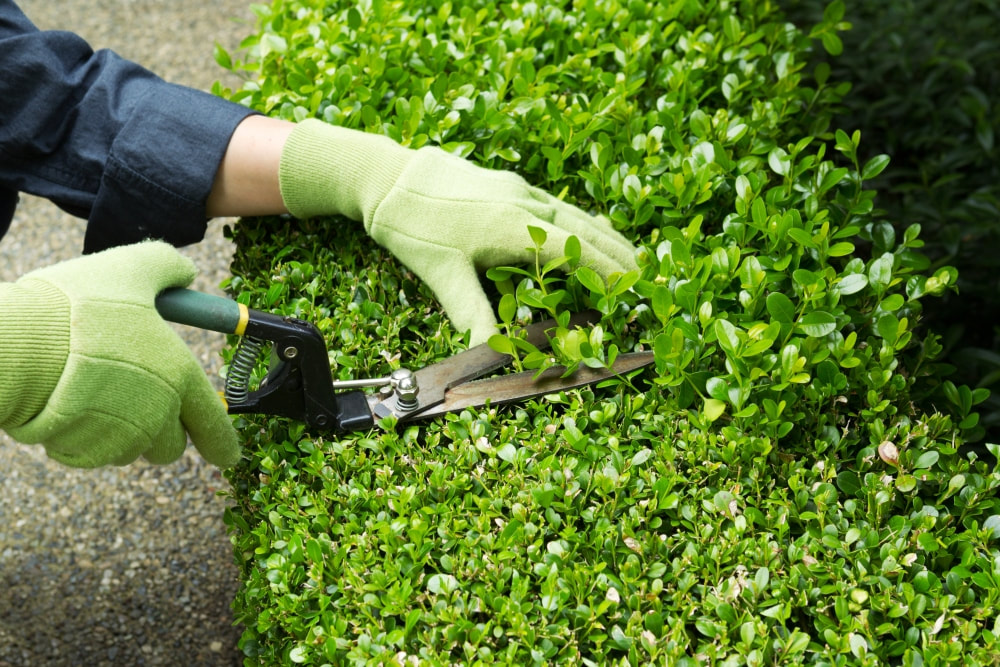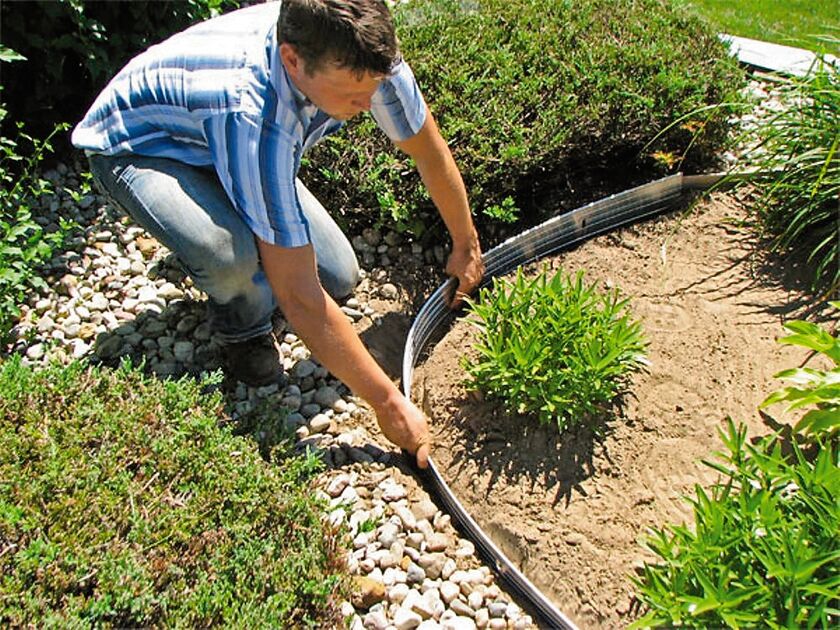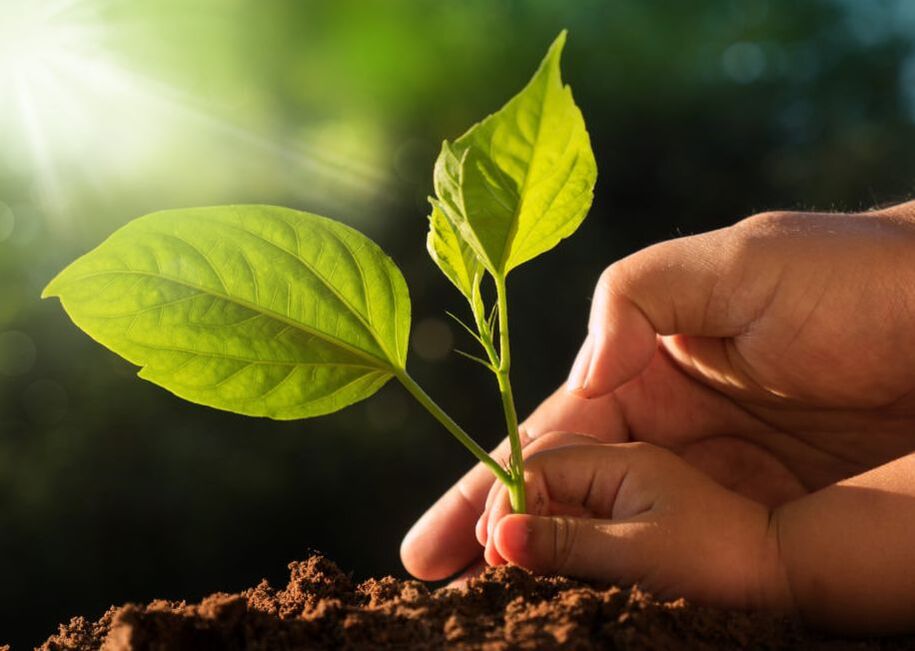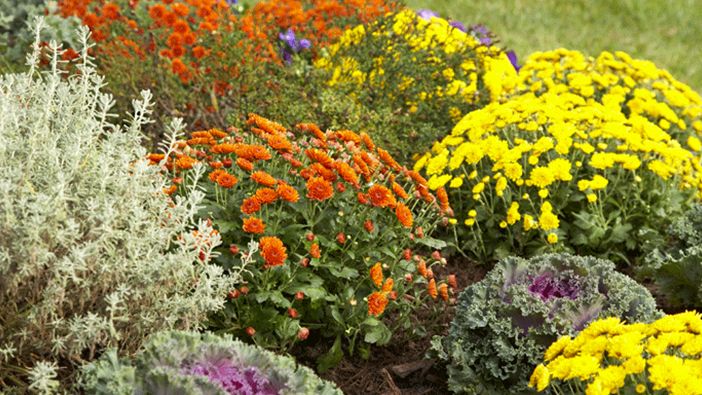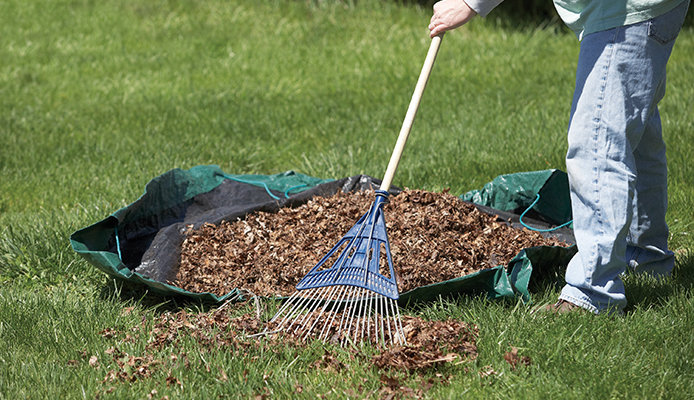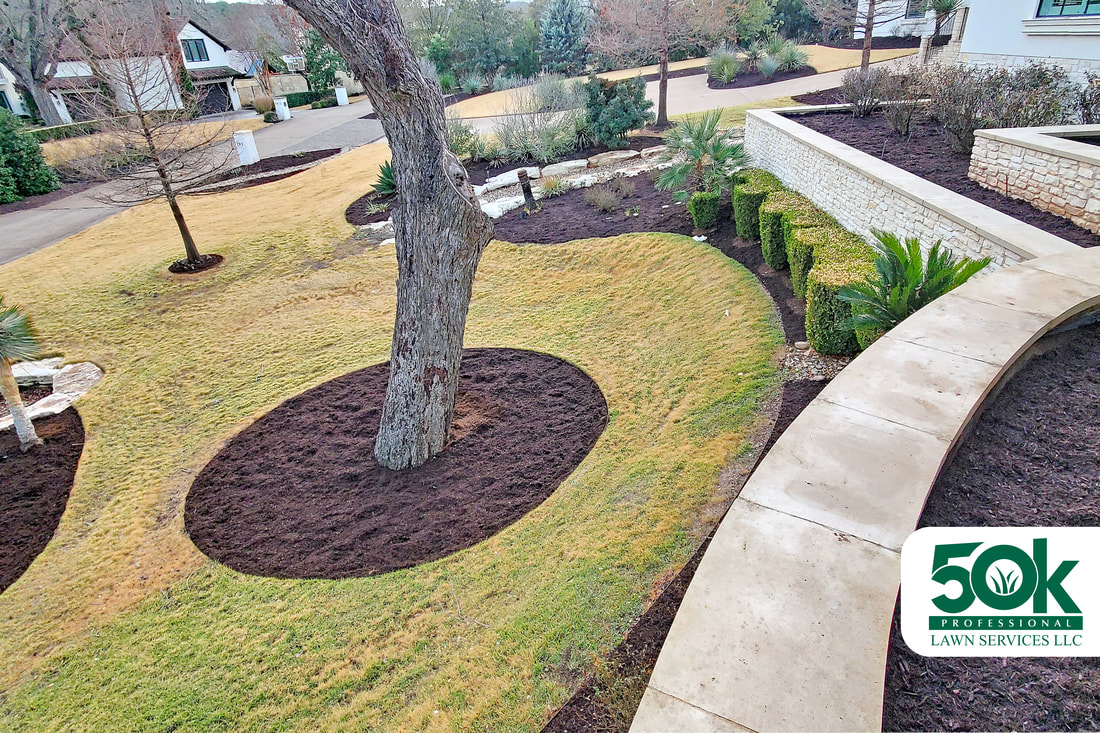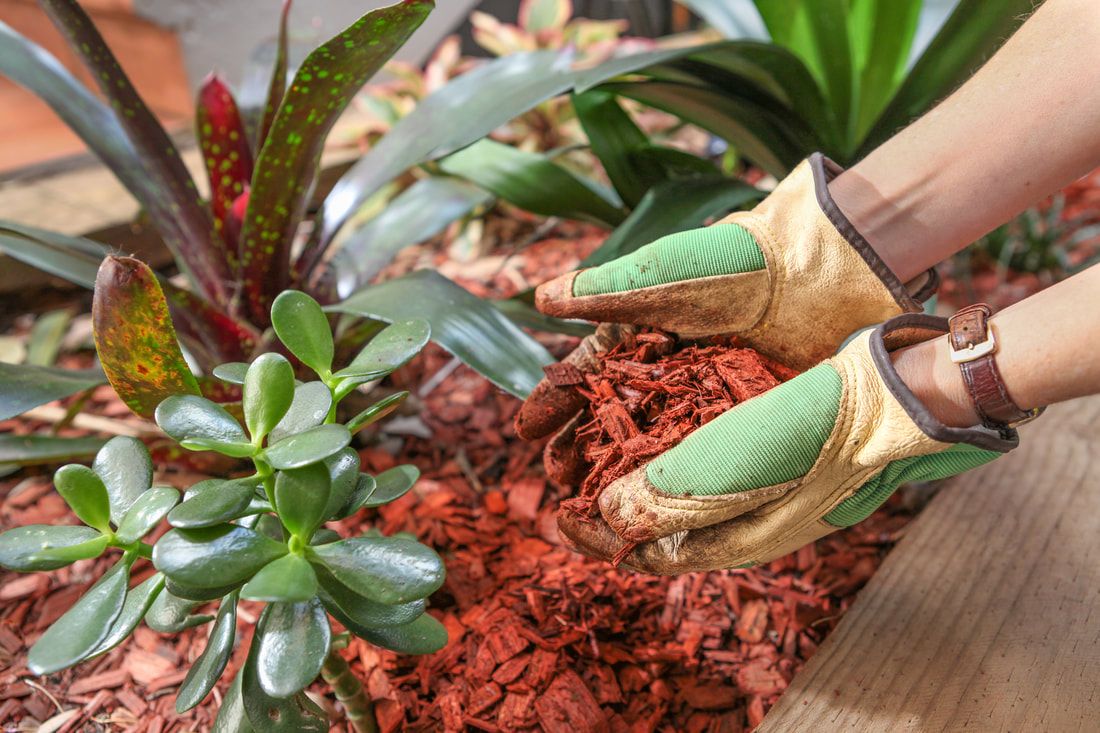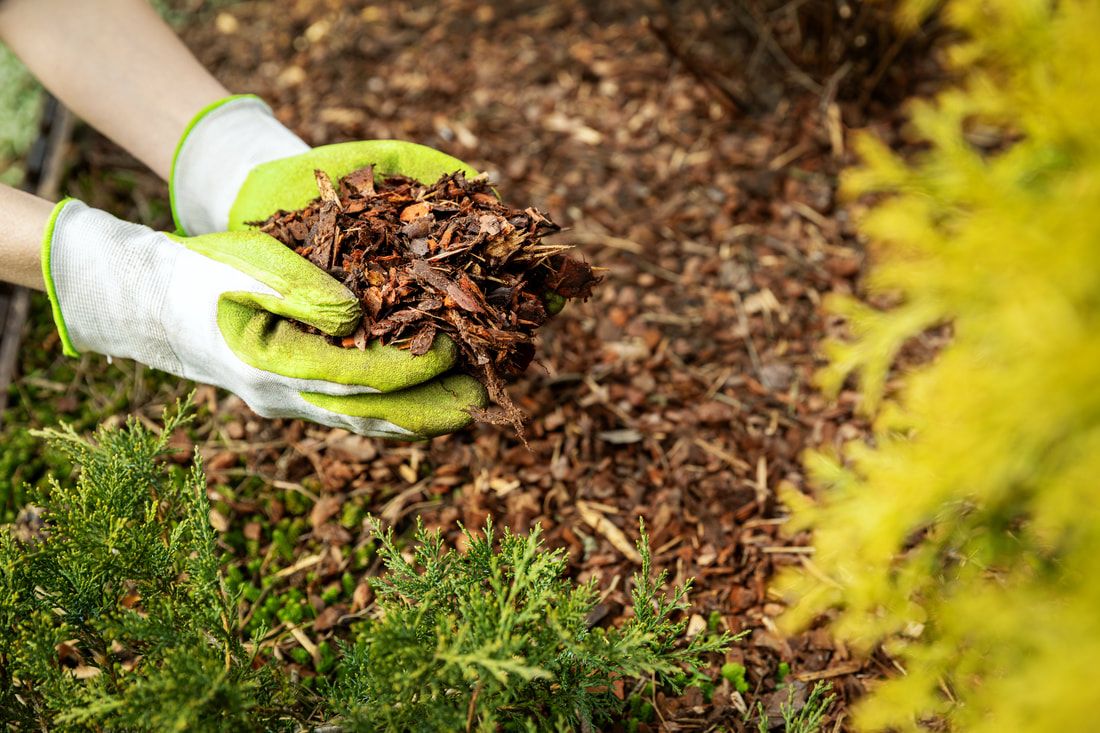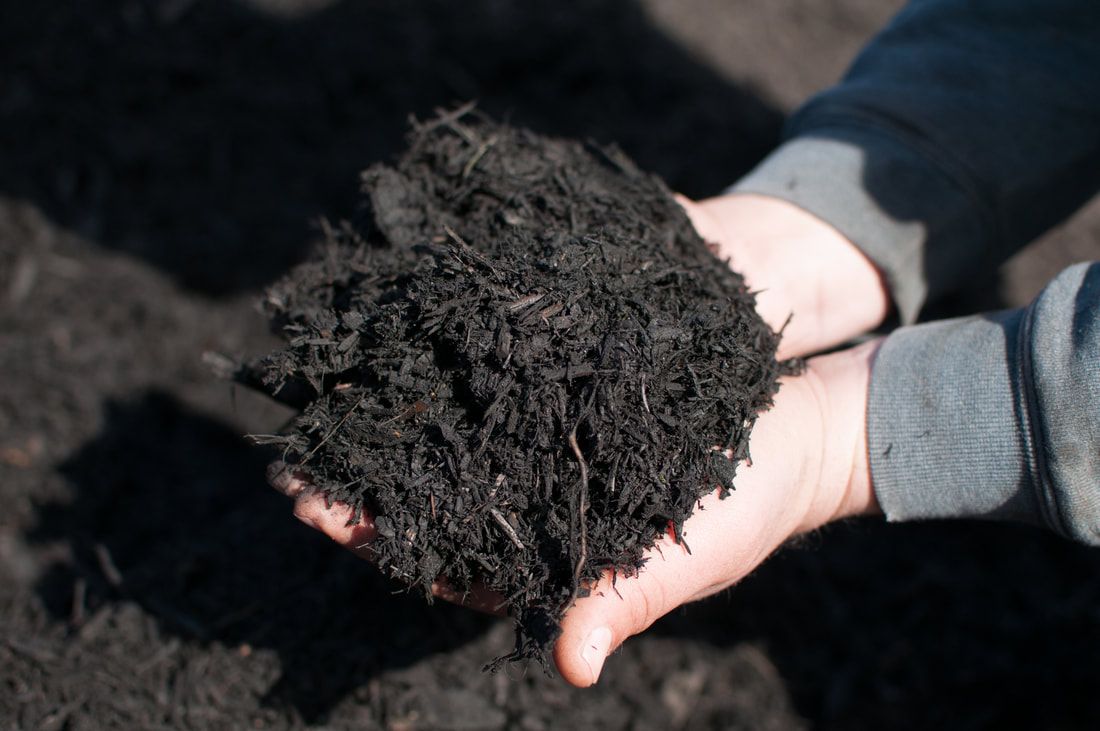|
1. Prune + cut shrubs and trees Pruning in early fall may also stimulate new growth, which has little time to harden before cold weather comes. 2. Tidy up the garden: edge it! Use a sharp, flat-headed tool, such as a spade, to cut a clean line between the beds and the lawn. This will give your garden a tidy appearance over the winter, and give you a head start on spring's chores. 3. Put in some green When the weather changes, some plants break down all the green pigment. Leaves turn yellow or red in fall. 4. Cold Tolerant annuals for Fall Color If you live in a climate with frost and cold, these plants will keep your beds and containers lovely as long as possible. 5. Clean-up leaves
Remove leaves and other plant debris from the lawn. If left on the grass through the winter, a thick pile of debris could cause bare spots and letting them pack down can smother the lawn and create conditions ripe for diseases.
0 Comments
Mulch labile carbon refers to the amount of carbon present in the organic matter that makes up mulch, and how easily it can be broken down or consumed by soil microorganisms. The labile carbon in mulch is an important component in the soil carbon cycle and can contribute to soil health and fertility by providing a source of energy for beneficial microorganisms. Mulch with a higher labile carbon content is more likely to be quickly consumed and broken down, leading to faster nutrient cycling and a more rapid improvement in soil quality. Why should I lay high quality mulch with high labile carbon?
High-quality mulch with high labile carbon content can be beneficial for your plants and soil. Labile carbon refers to the easily degradable or decomposable organic matter in the mulch. When mulch with high labile carbon is applied to the soil, it can stimulate the growth of beneficial microorganisms, which can help break down the organic matter in the soil and release nutrients for the plants to use. This can result in healthier plants with improved growth and yields. Additionally, high-quality mulch can help to suppress weeds, conserve soil moisture, and regulate soil temperature, all of which can contribute to a healthier, more vibrant garden.  Mulch Delivery and Installation Service in Austin Texas Mulch Delivery and Installation Service in Austin Texas UPDATED FOR 2023 WITH LESSONS LEARNED FOR THE PAST 8 YEARS Why Install Mulch? Mulch Installation can improve your soil conditions and maintain moisture to keep plants healthy and green, and can exponentially increase the curb appeal of your home. It is the most cost-effective improvements a homeowner, property manager, and realtor can do before move-ins, selling, events, holidays, or special occasions. This is part of basic landscaping 101. In more detail, mulch serves several purposes in gardens and landscapes: 1. Weed suppression: A layer of mulch blocks sunlight, making it difficult for weed seeds to germinate and grow. 2. Moisture retention: Mulch helps to conserve soil moisture by reducing evaporation, which is especially beneficial during dry periods. 3. Temperature regulation: Mulch acts as an insulator, helping to regulate soil temperature by keeping it cooler in the summer and warmer in the winter. 4. Soil health improvement: Organic mulches decompose over time, adding nutrients and organic matter to the soil, which improves its structure, fertility, and overall health. 5. Erosion prevention: A layer of mulch can help protect the soil from erosion by reducing the impact of heavy rain and wind on the soil surface. 6. Aesthetic appeal: Mulch can provide a clean, finished look to garden beds and landscape areas, enhancing the overall appearance of your outdoor spaces. What Is The Right Mulch? The right mulch depends on your specific needs and preferences. Some common types of mulch include: 1. Organic mulches: Wood chips, bark, shredded leaves, grass clippings, straw, and compost. These mulches break down over time and improve soil health. 2. Inorganic mulches: Gravel, stones, and rubber mulch. These mulches do not decompose and may be more suitable for areas where soil enrichment is not desired or for more permanent installations. Consider factors such as cost, availability, appearance, and the specific needs of your plants when choosing the right mulch for your garden or landscape. When to Install Mulch? The best time to install mulch depends on your climate and the goals you want to achieve: 1. For temperature regulation and moisture retention, apply mulch in late spring or early summer, when the soil has warmed up and plants are actively growing. 2. For weed suppression, you can apply mulch at any time, but it's most effective when done early in the growing season before weeds have a chance to establish. 3. For winter protection, apply mulch in late fall after the ground has started to freeze to help insulate plant roots from extreme temperature fluctuations. Where (Else) Do We Install Mulch? In addition to garden beds and landscapes, mulch can be installed in various locations: 1. Around trees and shrubs to suppress weeds and conserve moisture. 2. In pathways and walkways to create a clean, comfortable surface for walking and to suppress weed growth. 3. In playground areas, using materials like rubber mulch, to create a soft, cushioned surface that reduces the risk of injury. 4. On slopes and hillsides to prevent soil erosion and stabilize the area. 5. In vegetable gardens to improve soil health, retain moisture, and suppress weeds around plants. How Do We Install The Mulch and Maintain It? Organically maintaining and installing mulch without using chemicals is a straightforward process that involves selecting the right type of organic mulch, proper application, and regular maintenance. Here's a step-by-step guide:
Need more help? Please contact us for a free onsite estimate, and we will get back to you as soon as possible. Found us outside of our normal business hours? Reserve your spot in our schedule and order online, anytime! Local Bulk Mulch Delivered and Installed
$13.58 - $1,000.02
Mulch delivery and mulch installation service at any point in Austin, Texas. Choose from either Brown or Black Mulch. Delivered fresh from our mulch recycling facility to your door at the day of service. Why fresh mulch is best? Fresh mulch are full of labile carbon, a major food source for soil microbes. This in time feeds the soil food web beneath the mulch. Why don't you have red mulch? Red mulch can be problematic. Here's an extensive explanation why. How much mulch do I need? Use our online mulch calculator in our FAQ section below. There are only three commonly – used dyed mulch colors: Red Mulch – typically uses on a relatively commercial area such as line of restaurants, office building or a park. Its vibrant color applies good contrast to light plants and works well in rock gardens. It decomposes more quickly than other natural bark mulch, because it’s often made from recycled wood chips. Brown Mulch – It is a universal color indeed. Its natural color makes both light and dark colored plants look vibrant when paired together. It works well in small areas but lose its pretty color after just one season. It compliments all shades of green for an easy choice in their yard. Black Mulch – It is use well in commercial areas because of it’s long lasting color. It attracts, retains heat and sunlight, not ideal to be used in areas with delicate plants. It works well in cooler regions but in hot climates it can affect plant growth.
Organic fertilizers are a great option for promoting healthy plant growth without relying on synthetic chemicals. Here are some tips for using organic fertilizers effectively:
Soils often don’t provide essential plant nutrients required for optimum growth. We replenish lost nutrients on plants to ensure they have enough food by giving fertilizer. Fertilizer replace lost nutrients in the soil; It has essential nutrients to plants like Nitrogen (N), Phosphorus (P) and Potassium (K). Fertilized lawns that are well maintained is better for the environment. Plants have six primary nutrients: Acquired from air and water – carbon, hydrogen and oxygen and the other one Comes from varying sources, including fertilizer – nitrogen, phosphorus and potassium Nitrogen – supports overall plant health and above-ground growth. It deepens green color in grasses and plant. Phosphorus – is essential for strong root development. It improves fruit growth and seed production. Potassium – necessary for optimum plant health. It improves water retention and protects plants from cold. FERTILIZATION Many gardeners fall under false impression that if their plants don’t produce or unhealthy – giving fertilizer will fix the problem. On the other hand, inappropriately giving fertilizer can result in unfruitful or unhealthy plants. Basic Types of Fertilizer Natural or Organic Based Fertilizer – came from plant, animal microbes or mineral. Examples of organic-based / ingredients include: Plant – alfalfa, cottonseed meal or seaweed; Animal – bone meal or manure; Microorganisms – heat-dried microbes and Mineral – green sand or rock phosphate Synthetic or Non-Organic Fertilizer – a chemical nutrients that deliver rapidly. There are advantages and disadvantages on quick release nutrients. Synthetic fertilizers deliver nutrients immediately taken up by plant roots. This immediate availability can burn plants if too much fertilizer is applied. Any synthetic nutrients that do not absorb by the plants are very prone to leaching out of the landscape or garden beds. Synthetic fertilizers act as a water-soluble product, to be readily available for root uptake. They travel on out into the environment or into watersheds or aquifers, if they aren’t taken up. Therefore, careful and proper application must be provided. However, organic nutrients are in a form that is not easily absorbed immediately. Organic based or natural fertilizer nutrients depend on microorganisms in the soil to break and digest those nutrients down into a form – then - available to be absorbed by plants. Natural fertilizer has a slow take effect in cold weather because the microorganisms in the soil are less active. This process means organic based nutrients are not prone to leach and may contain a low salt index. There is a minimal risk of dehydration and burning, even in times of drought or over application. Therefore, organic based fertilizers enrich the soil and provide ongoing effects. A study in Stanford University determined that nitrate leached approximately five times on synthetic fertilizer than organic fertilizer. FERTILIZER NUTRIENTSA fertilizer that is high in nitrogen boost lawn growth at the beginning of the growing season. Example providers are dried blood, blood meal, cottonseed meal, fish emulsion and seaweed extract or fish fertilizer. A fertilizer that is high in phosphorus and potassium toughen up your plants or lawn for environmental stresses like drought or cold. Example providers are bone meal, rock phosphate. A fertilizer that is high in phosphorus power up to bloom your shrubs and perennials. Example providers are greensand, sulfate of potash. Organic Nutrient Release Rates Blood meal and types of manure – available to plant roots within 2–6 weeks. Alfalfa, Clover and Rye - available to plant roots within 2–6 months. Eggshells and Fish Emulsion – available to plants quickly often used within 2 weeks. Heat dried microorganisms (microbes that ate well, died and dried to provide nutrients) available to plant up to 8-10 weeks Organic ingredients help balance the soil to a neutral (6.5-7.0) pH. A good example is compost. As you add it to your soil, it will tend toward neutral. WHY DOES IT MATTER? We have to be wiser when it comes on spending money. We need to choose the one that can benefit us and our lawn. Synthetic fertilizers have quick results, but you need to be careful on following package directions and its nutrient levels need to be chosen wisely in order to prevent leaching that can contaminate our water resources. Organic fertilizers are slow moving but you can make long term investment of natural ingredients.
Here's what to do!
As a professional lawn care service provider, we try our best to give you an exceptional customer experience to the best of our abilities. We take our time to service each and every one of you until we meet our standards. Your satisfaction is always our top priority. Having that said, the time we allot for each property that we service for a day’s route is unpredictable. Push backs and delays are inevitable especially in times of heavy rain and intense heat. But don’t fret. You’re automatically going to be rescheduled to the next available day. We are implementing a "First In - First Out" Scheduling System. This means we will be scheduling the first delayed clients and move the upcoming ones to the rest of the following days. Got any concerns? We are always eager to help! You can always reach out to us seven days a week . You may call us at (844) 505-5296 Monday through Saturday 8 AM to 5 PM and on Sundays, you may send us a message via chat on our website, 8 AM to 5 PM. BASIC TIPS IN FERTILIZERSoils often don’t provide essential plant nutrients required for optimum growth. We need to replenish loss nutrients on plants to ensure they have enough food by giving fertilizer. Fertilizer replaces lost nutrients in soil; It has essential nutrients to plants like Nitrogen , Phosphorus (P) and Potassium (K). Fertilized lawns that are well maintained is better for the environment. Plants has six primary nutrients: Acquired from air and water – carbon, hydrogen and oxygen and the other one Comes from varying sources, including fertilizer – nitrogen, phosphorus and potassium Nitrogen – supports overall plant health and above ground growth. It deepens green color in grasses and plant. Phosphorus – is essential for strong root development. It improves fruit growth and seed production. Potassium – necessary for optimum plant health. It improves water retention and protects plants from cold. Fertilizer replace lost nutrients in soil; It has essential nutrients to plants like Nitrogen , Phosphorus (P) and Potassium (K). Fertilized lawns that are well maintained is better for the environment. Plants has six primary nutrients: Acquired from air and water – carbon, hydrogen and oxygen and the other one Comes from varying sources, including fertilizer – nitrogen, phosphorus and potassium Nitrogen – supports overall plant health and above ground growth. It deepens green color in grasses and plant. Phosphorus – is essential for strong root development. It improves fruit growth and seed production. Potassium – necessary for optimum plant health. It improves water retention and protects plants from cold. |
Call or Text |
